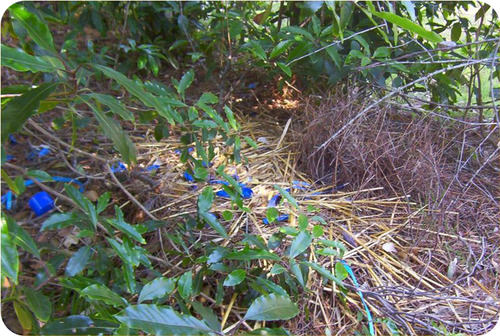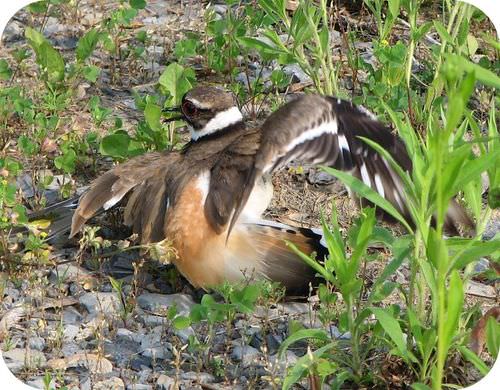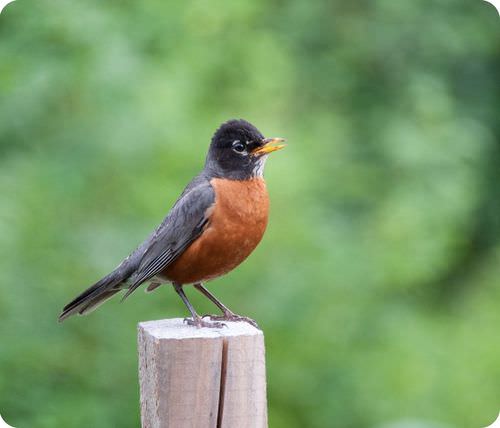10.8 生殖行为
章节大纲
-
So when does the peacock extend his tail?
::孔雀什么时候会延长尾巴?Peafowl are best known for the male's extravagant tail. Obviously though, a peacock cannot have his tail extended continuously. It would make it very difficult to move around. And it may be very tiring. So when does the peacock extend his tail? The peacock displays his tail as part of .
::孔雀最出名的就是雄鹰的奢侈尾巴。 很明显, 孔雀的尾巴不能连续延长。 它会很难移动。 它可能非常累。 当孔雀的尾巴延长时, 孔雀的尾巴会显示它的尾巴作为其中的一部分 。Mating and Courtship
::配和求偶Mating refers to the union of a male and female of the same for . The relationship between mates varies by species. Adults may have many mates, or they may mate with just one individual. Mates may stay together only while mating, for an entire breeding season, or even for life.
::配方是指一男一女的结合。伴侣之间的关系因物种而异。成年人可能有许多伴侣,或只与一人交配。配方只能在交配期间、整个育种季节、甚至一生呆在一起。Females are likely to be more selective than males in choosing mates. In many species, males put on courtship displays to encourage females to choose them as mates. For example, to attract a mate, a male bowerbird builds an elaborate nest decorated with hundreds of small blue objects (see Figure ).
::在选择伴侣方面,女性可能比男性更具选择性。 在许多物种中,男性上求偶展示鼓励女性选择伴侣。 例如,为吸引伴侣,雄性弓鸟建造了一个精密的巢穴,上面装饰了数百个小蓝色物体(见图 ) 。Bowerbird Decorating His Nest. A male bowerbird spends many hours collecting bits of blue glass and other small blue objects to decorate his nest. A female bowerbird inspects the nests of many males before choosing as a mate the male with the best nest. Parental Care
::父母照料In most species of , , and , parents provide no care to their offspring. In and mammals , on the other hand, is common. Most often, the mother provides the care. However, in some species, both parents or just the father may be involved.
::在大多数物种中,父母不照顾他们的后代,而在哺乳动物和哺乳动物中,通常由母亲提供照料,但在某些物种中,父母或父亲都可能参与其中。Parental care is generally longest and most involved in mammals. Besides feeding and protecting their offspring, parents may teach their offspring skills they will need to survive on their own. For example, meerkat adults teach their pups how to eat scorpions. They show the pups how to safely handle the poisonous and how to remove the stingers.
::父母照料通常时间最长,而且大多涉及哺乳动物。 除了喂养和保护他们的后代外,父母还可以教后代自己生存所需的技能。例如,幼崽成年人教幼崽如何吃蝎子。他们向幼崽展示如何安全地处理有毒物质,如何去除刺刺。This mother killdeer is pretending she has a broken wing. She is trying to attract a predator’s attention in order to protect her chicks. This behavior puts her at risk of harm. How can it increase her fitness? Defending Territory
::防御领土Some species of are territorial . This means that they defend their area. The area they defend usually contains their nest and enough food for themselves and their offspring. A species is more likely to be territorial if there is not very much food in their area. Animals generally do not defend their territory by fighting. Instead, they are more likely to use display behavior . The behavior tells other animals to stay away. It gets the message across without the need for fighting. Display behavior is generally safer and uses less energy than fighting. Male gorillas use display behavior to defend their territory. They pound on their chests and thump the ground with their hands to warn other male gorillas to keep away from their area. The robin displays his red breast to warn other robins to stay away ( Figure ).
::某些种类的属地。 这意味着它们可以保护自己的领地。 它们保护的地区通常包含它们的巢和足够的食物, 给它们自己和后代。 如果一个物种没有太多食物, 它们更有可能成为其领土。 动物一般不会通过战斗来保护它们的领地。 相反, 它们更可能使用显示行为。 这种行为会让其他动物远离它。 它会让其他动物远离它。 它会得到信息而不需要战斗。 显示行为通常比战斗更安全, 使用能量更少。 雄猩猩用显示的行为来保护自己的领地。 它们用手敲打胸部, 敲打地面, 警告其他大猩猩远离它们的领地。 Robin 展示他的红胸, 警告其他大猩猩远离它们。 (图示 ) Robin 展示他的红胸, 警告其他大猩猩远离它(图示 ) 。The red breast of this male robin is easy to see. The robin displays his bright red chest to defend his territory. It warns other robins to keep out of his area. Some animals deposit chemicals to mark the boundary of their territory. This is why dogs urinate on fire hydrants and other objects. Cats may also mark their territory by depositing chemicals. They have scent glands in their face. They deposit chemicals by rubbing their face against objects.
::一些动物用化学剂储存化学剂,以标明其领土的边界。这就是为什么狗在消防水合剂和其他物体上小便。猫也可以用化学剂储存化学剂来标记其领土。它们脸上有气味腺。它们用摩擦脸对着物体放化学剂。Science Friday : "Hot" For Turkey
::科学星期五:土耳其的“热热”A male wild turkey's display conjures images of Americana and festive feasts, but isn't intended for human . In this video by Science Friday, Dr. Richard Buchholz describes how female turkeys use it to discern a male's genetic prowess.
::一只雄性野火鸡展示的美式和节日盛宴的图象,但并非是人类的。在这个由科学星期五拍摄的影片中,Richard Buchholz博士讲述了雌性火鸡如何利用它来辨别男性的遗传能力。Science Friday : Shake Your Silk-Maker: The Dance of the Peacock Spider
::科学星期五:摇摇你的丝绸大师:孔雀蜘蛛的舞蹈With their ornately-colored bodies, rhythmic pulsations, and booty-shaking dance moves, male peacock spiders attract the attention of spectating females as well as researchers. In this video by Science Friday, researcher Madeline Girard interprets what these displays actually say to a female spider.
::男性孔雀蜘蛛以其原色的身体、有节奏的脉搏和摇晃的舞姿吸引了女观众和研究人员的注意力。 在科学周五的这段视频中,研究人员玛德琳·吉拉尔(Madeline Girard)解释这些展示实际上对女性蜘蛛所说的话。Science Friday : In A Flash: Firefly Communication
::科学星期五:在闪光中:萤火虫通讯Fireflies communicate with a "language of light" that scientists still don't completely understand. In this video by Science Friday, researchers James Lloyd and Marc Branham discuss unique flash patterns and times for some of the 2,000 types of fireflies that light up the summer nights.
::消防员与科学家们仍然无法完全理解的“光之语”进行沟通。 在科学星期五的这段视频中,研究人员詹姆斯·劳埃德和马克·布兰汉(James Lloyd和马克·布兰汉姆)讨论了在夏夜点燃的2,000种萤火虫中某些类型的闪光模式和时间。Summary
::摘要-
Behaviors relating to reproduction include mating, courtship, and parenting behaviors.
::与生育有关的行为包括交配、求偶和为人父母的行为。
Review
::回顾-
Describe an example of courtship behavior in animals.
::描述动物求偶行为的例子。 -
In what vertebrates is parental care common?
::在脊椎动物中,什么是父母照料常见的? -
Give two examples of parental care.
::举两个父母照料的例子。
-
Behaviors relating to reproduction include mating, courtship, and parenting behaviors.



